The Hollywood garden designers who turned their hand to a magical corner of Somerset
Caisson House's fifteen abandoned locks were part of the draw for Amanda and Phil Honey, who have created this astonishing garden in the grounds of the former headquarters of the Somersetshire Coal Canal Company just outside Bath. Caroline Donald discovers more; photography by Jason Ingram.
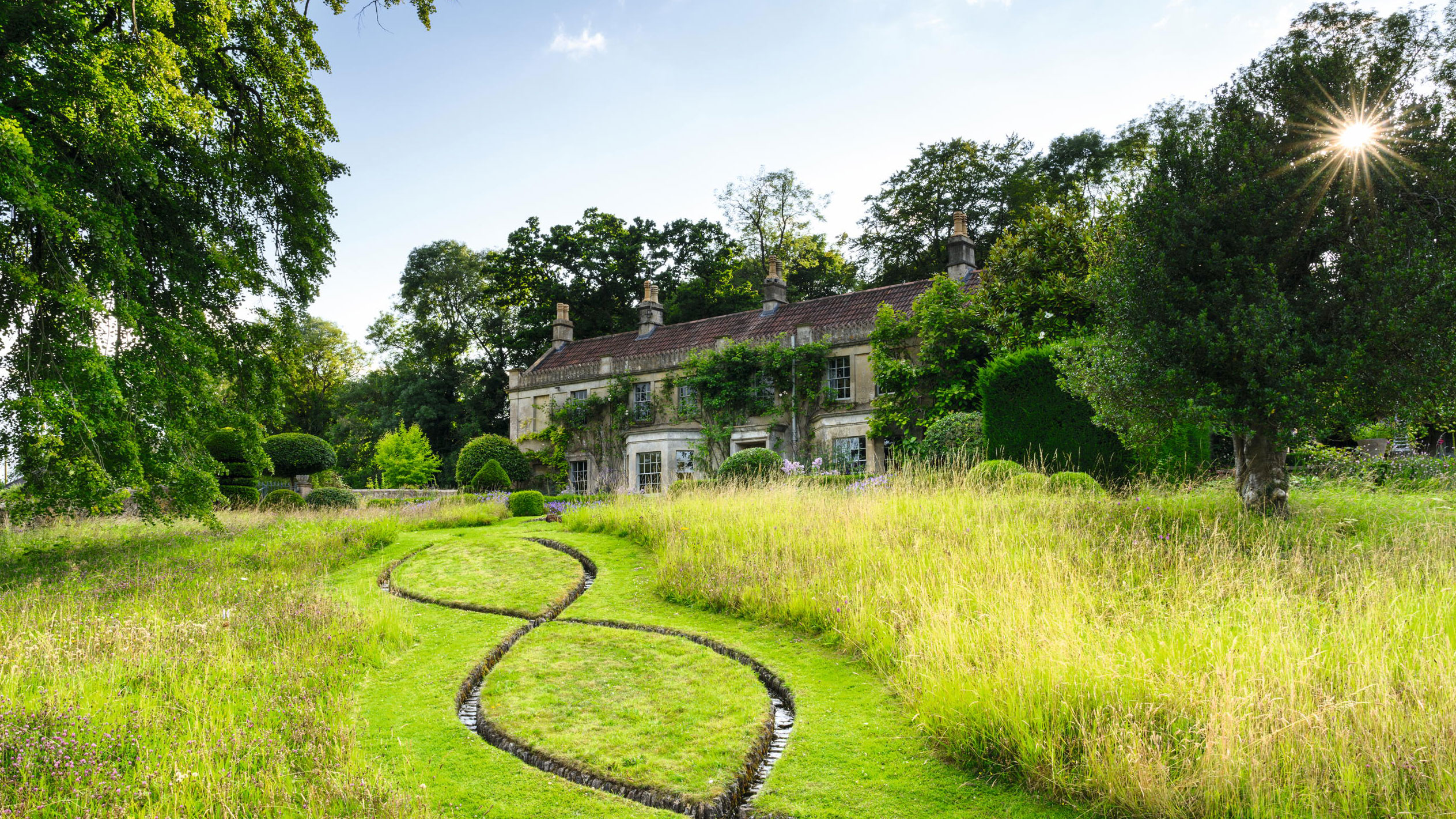
If ever there was a couple capable of tackling the 40 acres of neglected landscape at Caisson House, Combe Hay, near Bath, it is Amanda and Phil Honey. Both are from Somerset farming stock (Mr Honey and his seven siblings grew up a stone’s throw away) and know how gently to nurture the land, but, for many years, they ran Palmbrokers, a company creating elaborate green scenery for big-budget films and events in high-pressure environments: they worked on everything from Hollywood blockbusters such as Troy, The Woman in Black and Miss Potter to shampoo commercials and the plants for the Big Brother house. ‘Going into an empty set and building a forest or garden in three days; not that many people have that experience,’ says Mr Honey.
Rolling up their sleeves to create something of wonder and beauty in unusual, tricky spaces is, therefore, their bread and butter — no bad thing, as, together with the Georgian house and dilapidated farm buildings they bought in 2010, are 15 abandoned canal locks at the bottom of the garden. These are the ghosts of a series of 22 locks that was built between 1795 and 1820 as part of the Somersetshire Coal Canal, which once ran through the Cam valley carrying barges from the pits that dominated the area around Paulson to join the Kennet & Avon Canal.
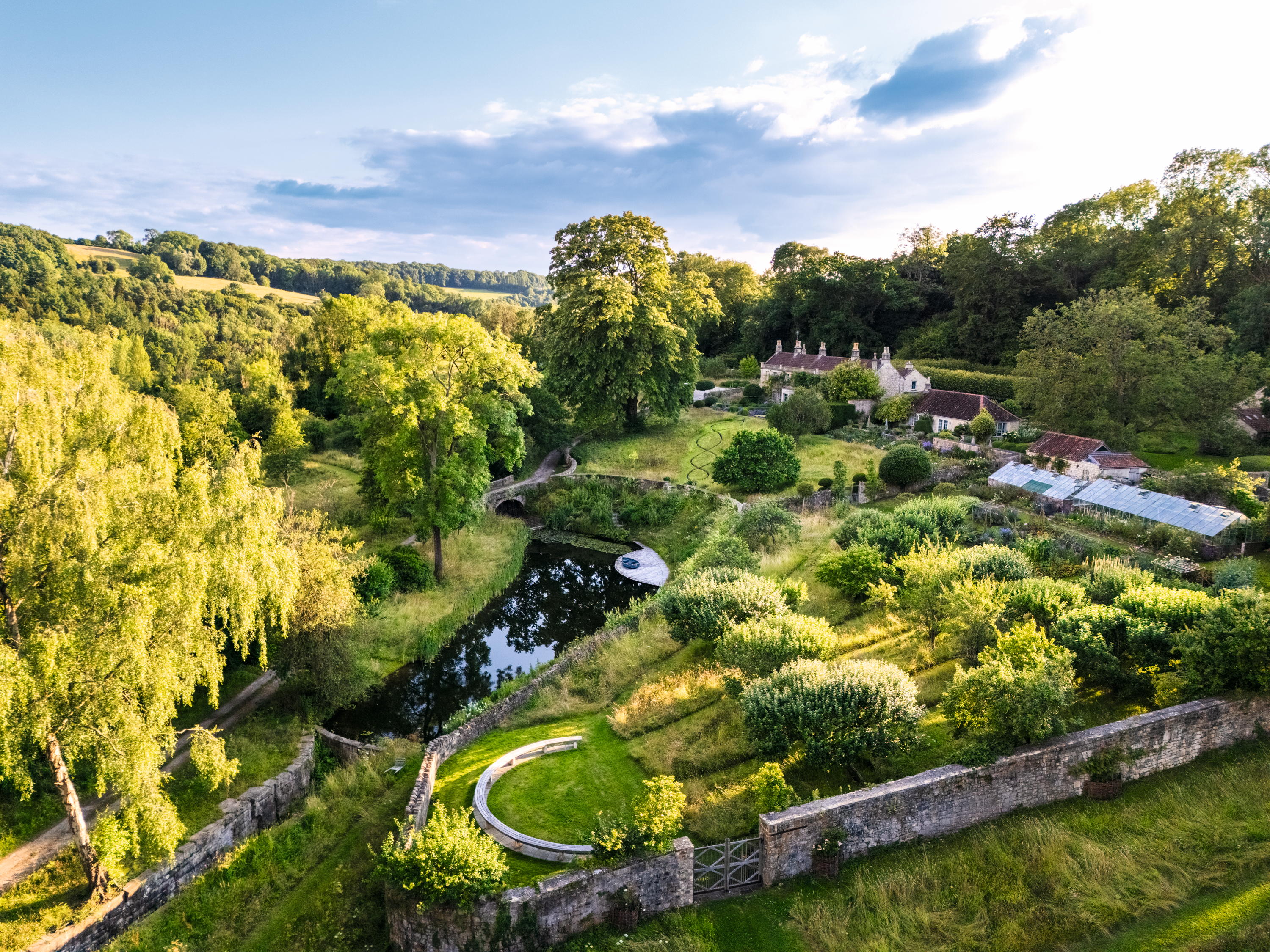
The areas near the house have been connected to the waterway with topiary forms, echoed on the lower slopes by trees.
Despite the poor state of the property and its industrial graveyard, Mr and Mrs Honey both knew as soon as they saw Caisson that it was the one for them; a place into which they could breathe new life. Surrounded by trees on the higher slopes of the valley, it also has long views of the countryside beyond: ‘There was something very magical about it,’ says Mrs Honey.
The house, built in 1815, had been the headquarters of the canal company and home to the chief engineer, but its name summons a further ghost. A caisson lock was an ambitious piece of engineering designed to take barges from one level of the canal to the other by way of a watertight wooden box floating through a 50ft-deep body of water. Unfortunately, after a couple of trial runs, it failed and had to be filled in; it was eventually replaced by the present series of locks.
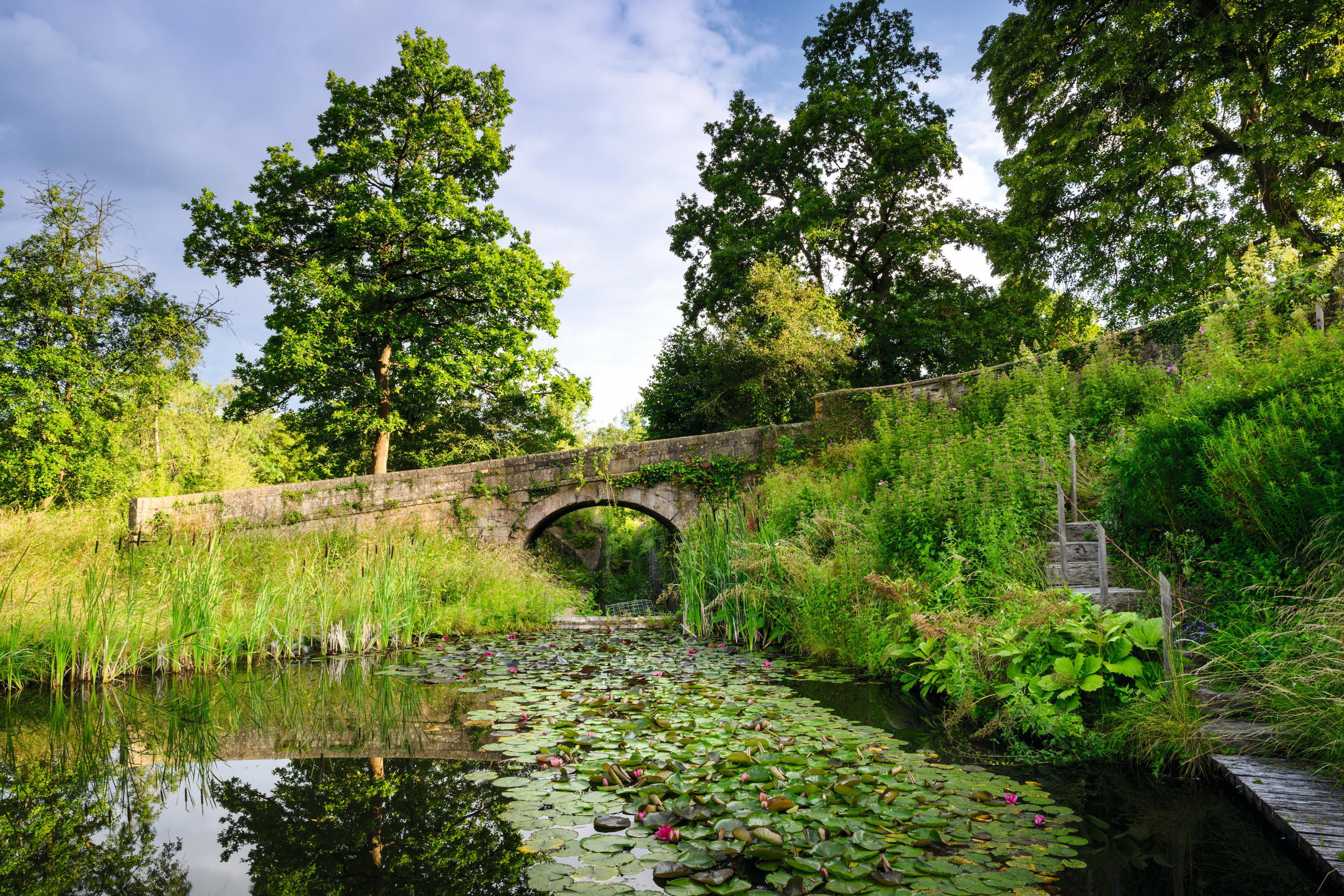
The pound for the series of 22 locks around Caisson House, now alive with wildlife. The locks (of which 15 survive) replaced the original ‘caisson’ lock, which was intended to take barges from one level to another via a watertight wooden box floating in 50ft of water, but, disappointingly, failed.
Mrs Honey trained as a garden designer when the youngest of the couple’s two children started school and the 2½ acres of gardens now have the strong narrative one might encounter in one of their film sets; dreamy scenes of scented plants and secret corners through which to wander, but with the bonus that the trees are not made of polystyrene; if the plants are in pots, they are there to stay.
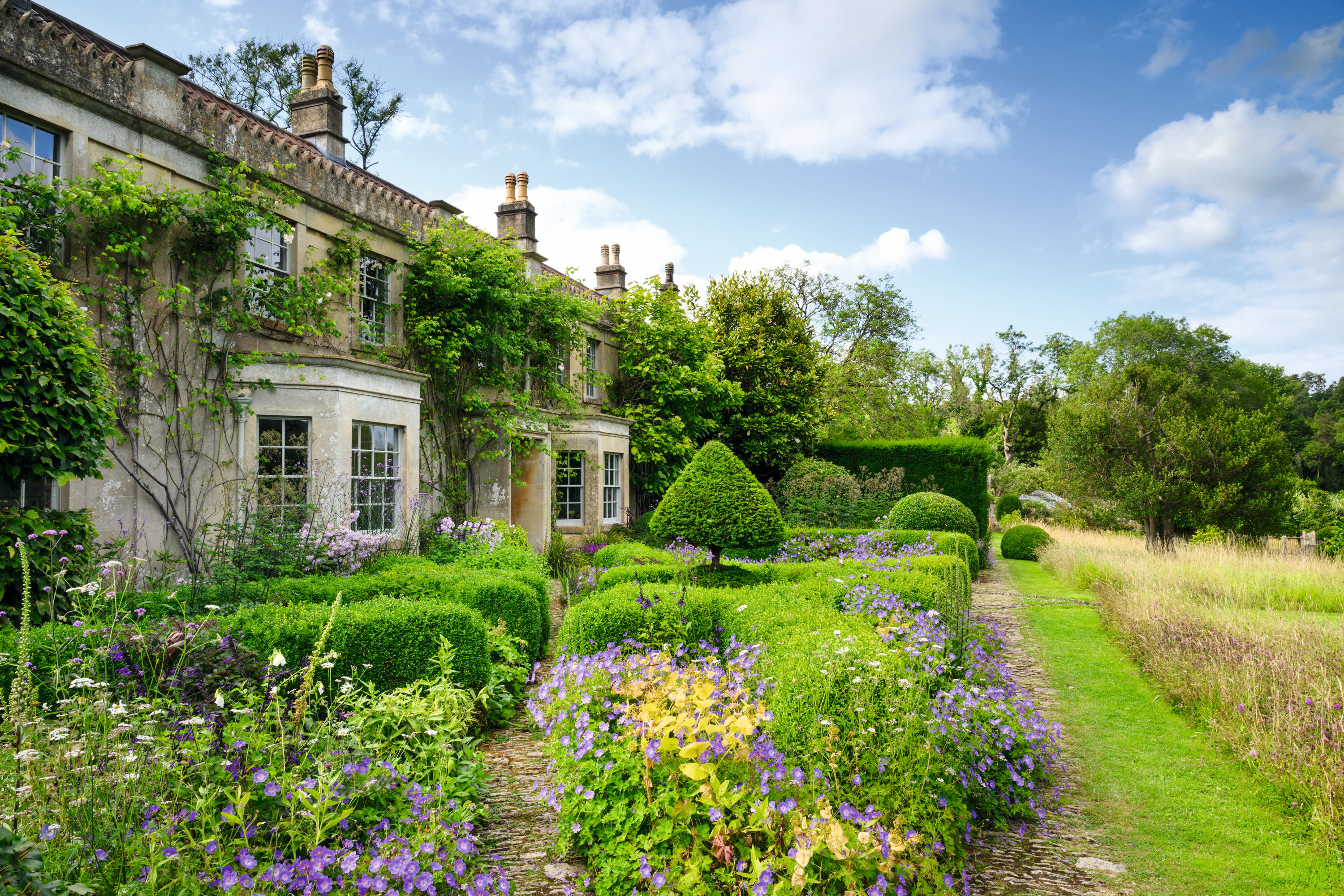
Lax hardy geraniums, fox glove spires and airy Verbena bonariensis with R. ‘Madame Alfred Carrière’ on the wall.
The flagstone kitchen terrace, for example, looks like one you might come across in France, where the couple spends a lot of time. It is enclosed by espaliered crab apple Malus ‘Evereste’ and a series of pollarded mulberries intensely underplanted with ‘Iceberg’ rose and billowing white herbaceous borders.
How natural plant tonics help Caisson House
• To control box blight and other fungal diseases, Phil Honey ferments an equal weight of mare’s tail (Hippuris vulgaris) and unrefined organic sugar and filters the resulting liquid to apply as a spray, diluting it 2ml to a litre of water
• Another potion is made using the edible part of a vegetable or fruit, fermented as above. This can then be used for soaking the seeds of next year’s crop, thereby giving them immunities and trace elements that the previous crop has amassed
• One of his favourite mixtures is a root drench: to a one-litre bucket of water add a muslin bag containing a handful of boiled potatoes and another bag containing a handful of good leafmould. ‘The microrhizomes in the leafmould feed from the starch in the potatoes and grow massively; bubbles should appear on the surface,’ Mr Honey says. Forget sleeping: ‘At the point they disappear, you end up with a brown rim around the bucket. Even if it is in the middle of the night, you have to use it immediately,’ he warns. ‘It gives anything freshly planted or sickly a massive dose of microrhizomes and a boost’
To distract from the tennis court beyond is a line of limes, underscored by long, formal box hedging that sits on top of a stone wall, ‘our tribute to Russell Page,’ says Mrs Honey. Should a film crew be looking for a colourful, productive walled kitchen garden of heightened imagination, they would find it at Caisson.
Exquisite houses, the beauty of Nature, and how to get the most from your life, straight to your inbox.
In front of the house, which is covered with fragrant Rosa ‘Madame Alfred Carrière’, are terraces of stone setts gathered around the grounds, with soft herbaceous planting and a parterre with hero pieces, as Mrs Honey calls them: box, beech and yew topiary, that were, like the limes and mulberries, bought mature to give some instant initial age to the garden and justified the outlay. They also provide structure for the winter months, before the garden wakes up with great drifts of snowdrops.
Nourishing the soil is of primary importance, as it was seriously depleted when the Honeys bought Caisson. Homemade compost has been vital and an old cow barn looks like a wizard’s workshop with rows of neatly labelled jars. This is where Mr Honey tests out various potions based on Korean practices of fermentation (see box), which he learnt from Joshua Sparkes, now at The Collective at Woolsery in Devon.
Not all areas called for improvement — rather the converse. From a round pond in front of the house, a rill gently curves and crisscrosses in a double ribbon across the narrow sloping lawn, down to a rustic oak gate. The grass to each side grows long and blends into the wild flower meadows beyond. This not only saves on mowing time — labour is confined to Mr and Mrs Honey and the gardener, Tristan Thomas — but one of the critical reasons that the Honeys were drawn to Caisson was that the land had not been intensely farmed with chemicals and pesticides.
Left to its own devices, it is a haven for wildlife, filled with several varieties of orchids, yellow rattle, knapweed and clover. Ragwort also appears. This is allowed as it provides good fodder for the tiger moth, but when it looks as if it is going to seed, Mr Honey will venture forth to pull it out before a local farmer comes to cut the meadows for hay.
For years, the locks lay buried under rubbish, brambles and self-seeded ash, but they are now celebrated as part of the property’s industrial heritage: deep stone chambers set a slightly eerie scene with walls covered in a variety of ferns and mosses. What was once the pound — the holding area between locks five and six — has been dammed, creating a large pond where newts, freshwater mussels and other wildlife flourish. An oak boardwalk skirts gracefully along the bottom of its steep banks, which are planted with fennel, valerian and sweet rocket, all cut back once a year with a hedge trimmer.
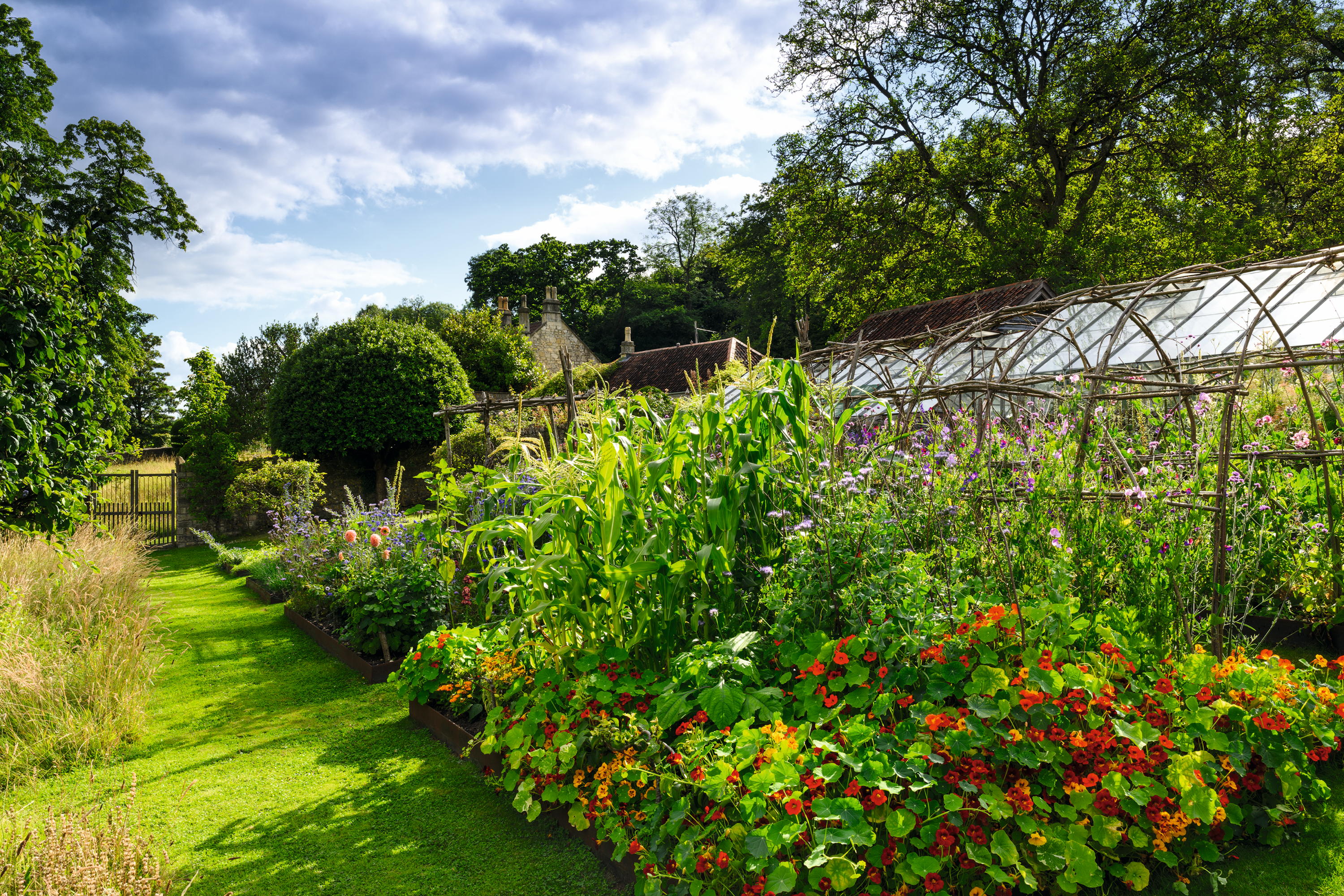
Late summer in the kitchen garden brings a colourful mix of vegetables and flowers with sweetcorn, nasturtiums, sweet peas and dahlias.
In a long shed where once coal barges would be rested up for repair, workshops of a 21st-century variety are held on such subjects as botanical block printing and Christmas wreath-making. It also serves as somewhere to gather on garden tours and open days.
As to where the actual caisson chamber lies, it remains a mystery and that is the way Mr Honey would like it to stay for now, as he doesn’t fancy his lawn being dug up to look for it. Some ghosts are best left sleeping.
Visit www.caissongardens.com
This feature originally appeared in the June 25, 2025 issue of Country Life — you can subscribe to the magazine here.
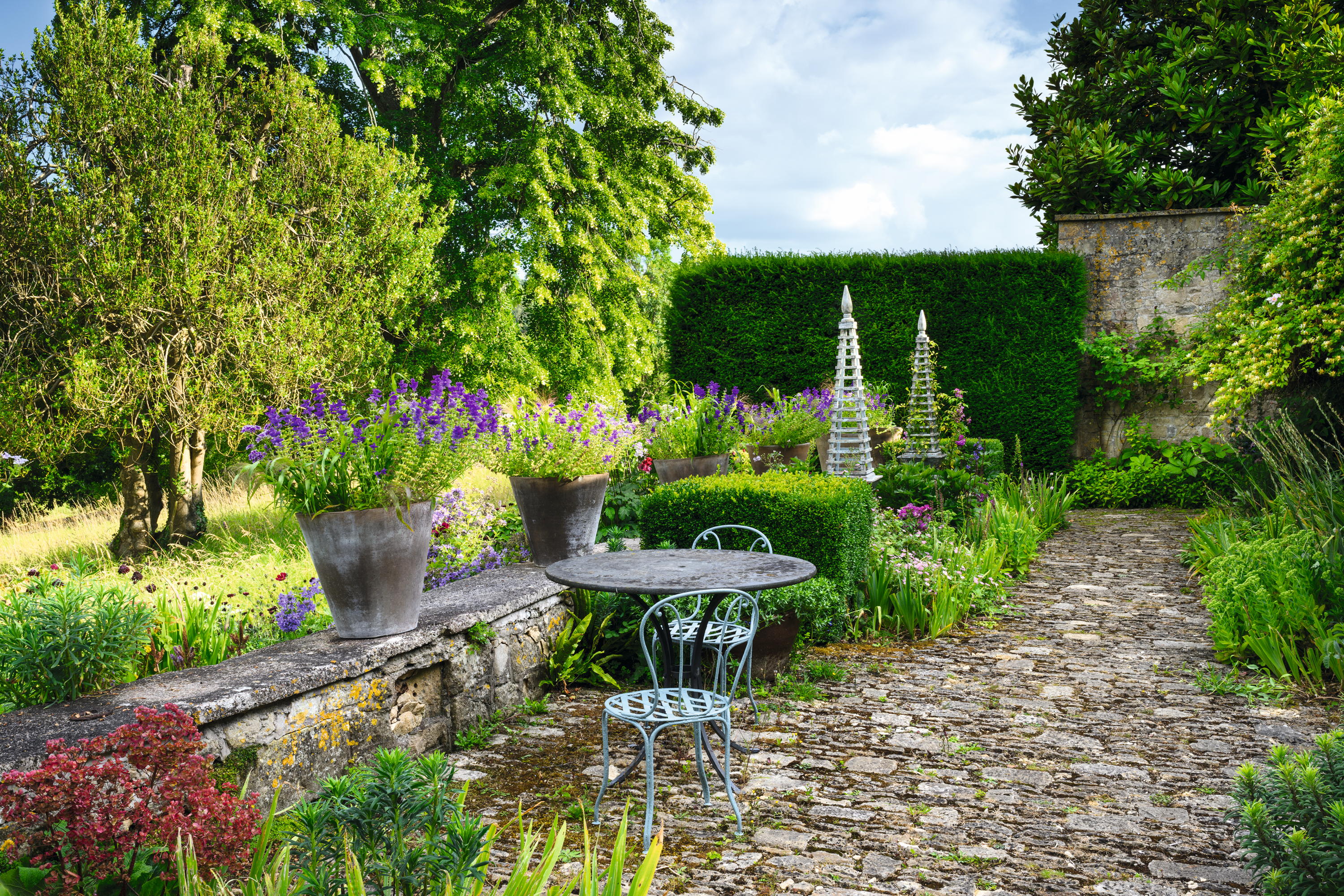
The experience of the Honeys in designing green sets for films pays off: everywhere feels as if it has been there for years as on a terrace overlooking the meadow.